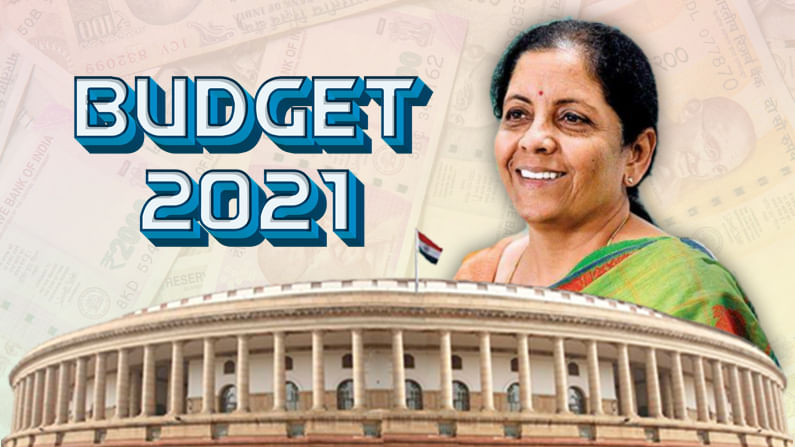Budget 2021: A-Z understanding of the Budget terminologies
- Hemanshi Tewari
- Last Updated : January 26, 2021, 08:43 IST

As the Budget day nears, people’s expectation from the most important policy document also rises. The budget comes with several terms which may be difficult to understand for the layman.
Here, Money9 tries to simplify the terms used in the budget. Hence, our readers can refer to the budget dictionary that we have curated to help you understand the budget better.
A
- Annual Financial Statement
The document shows estimated receipts and expenditures of the Government of India for the coming year.
- Appropriation Bill
Also known as a spending bill. Under this bill, a certain amount of money is set aside for specific spending
- Ad-Valorem duties
Ad-Valorem tax is based on the assessed value of a product and is charged by the state and municipal governments.
B
- Banking Cash Transaction Tax (BCTT)
BCTT was introduced in the Finance Act, 2005, to prevent laundering and generation of black money.
- Blue-sheet
A blue-sheet contains vital economic numbers that form the basis for the calculations related to the budget.
- Balance of payments
BOP is a difference between inflow of the money to the country and outflow of the money to the rest of the world.
C
- Consolidated Fund of India
Consolidated fund indicates the revenue received by the government and expenses made by it.
- Contingency Fund of India
A contingency fund is basically an emergency fund to enhance financial stability.
- Corporate Tax
It is a company tax imposed on the income or capital of corporations or legal entities.
- Central Plan Outlay
It is the division of money among the different sectors of the economy and to different ministries.
D
- Direct & Indirect Taxes
Direct taxes are levied on income and profits, while indirect taxes are levied on goods and services.
- Disinvestment
Disinvesting means selling off certain assets by the government.
E
- Excise duties
Excise duty is an indirect tax levied on some specific products such as tobacco, alcohol, etc.
- Excess grants
Excess grant is a demand for excess money made by the government for meeting indispensable government expenses.
F
- Finance Bill
Finance Bill is the money bill introduced in the parliament every year to initiate the financial amendments proposed by the government.
- Fiscal Deficit
Difference between the income of the government and its expenditures is the fiscal deficit.
- Fiscal policy
Fiscal policy is employed by the government to achieve goals related to expenditure and revenue collection.
G
- Gross Domestic Product
GDP is the money value of all finished goods and services produced in the country in a particular time period.
- GST
GST is a tax levied on the supply of goods and services.
H
- Household Income
The combined income of all people in a particular household.
I
- Income tax
Taxes imposed by the government on the income of individuals or businesses.
- Inflation
Inflation is the rate at which prices rise in an economy over a specific time period.
M
- Monetary policy
Monetary policy is laid down by the central bank to control the money supply and demand in an economy.
N
- National Debt
Amount of money which is borrowed by the government of India.
- Non-plan Expenditure
Non-plan expenditure is the amount spent by the government on non-productive areas such as wages, salaries, loans, interests subsidies, etc.
O
- Official exchange rate
The exchange rate is the price of one currency in terms of another currency.
P
- Public Account
It keeps the journal of those transactions where the government is only the banker. For example, public provident fund, small savings scheme accounts, etc.
- Primary deficit
Primary deficit is the difference between the current deficit and interest payments made by the government.
- Plan expenditure
Plan expenditure is the amount spent by the government in productive areas. Plan expenditures are detailed under the current five year plan.
R
- Revenue deficit
It is the total difference between revenue expenditure and revenue receipts.
- Revenue receipts
Revenue received by the government from all sources.
- Revenue expenditure
Revenue expenditure is the expenditure made by the government, but, it is not related to the creation of assets.
- Revenue Surplus
If expected government earnings exceed over estimated government expenditure, then it is called revenue surplus.
S
- Sales tax
Tax imposed by the government on the sale of certain goods services.
- Subsidies
Subsidies are government incentives to financially support individuals or firms
T
- Treasury bills
Treasury bills are issued by the government as a short term debt instrument.
- Tariff
Tariff is the tax paid for the goods and services coming to the country. It is the source of revenue for the government.
- Twin deficit
When the country is going through both the current account deficit and budget deficit, it is known as the twin deficit. It means the country’s imports are greater than the exports and its expenditures are greater than the revenues.
V
- Value-added tax
VAT is a tax imposed on the product whenever a value is attached to a product at every stage of the supply chain.
Z
- Zero-based budgeting
It is a methodology that aligns the spending with the strategic goals.
Download Money9 App for the latest updates on Personal Finance.
Related
- Union Budget 2025: क्या सिगरेट और शराब के बढ़ेंगे दाम? जानें बजट में क्या हुआ बदलाव
- Budget 2025:मकान मालिकों को बड़ी राहत! 6 लाख रुपये तक किराये पर नहीं कटेगा TDS
- Budget 2025: बजट पर आया सर्वे, 71 फीसदी को इनकम टैक्स में छूट और 72 फीसदी को चाहिए जॉब
- Budget 2025: न्यू और ओल्ड टैक्स रिजीम के बीच बना रहेगा अंतर, राहत के लिए हो सकते हैं ये बड़े ऐलान
- Budget’24: New LTCG rule to hit long-term property owners hard
- Looking to buy gold? Buy now before it’s too late!

